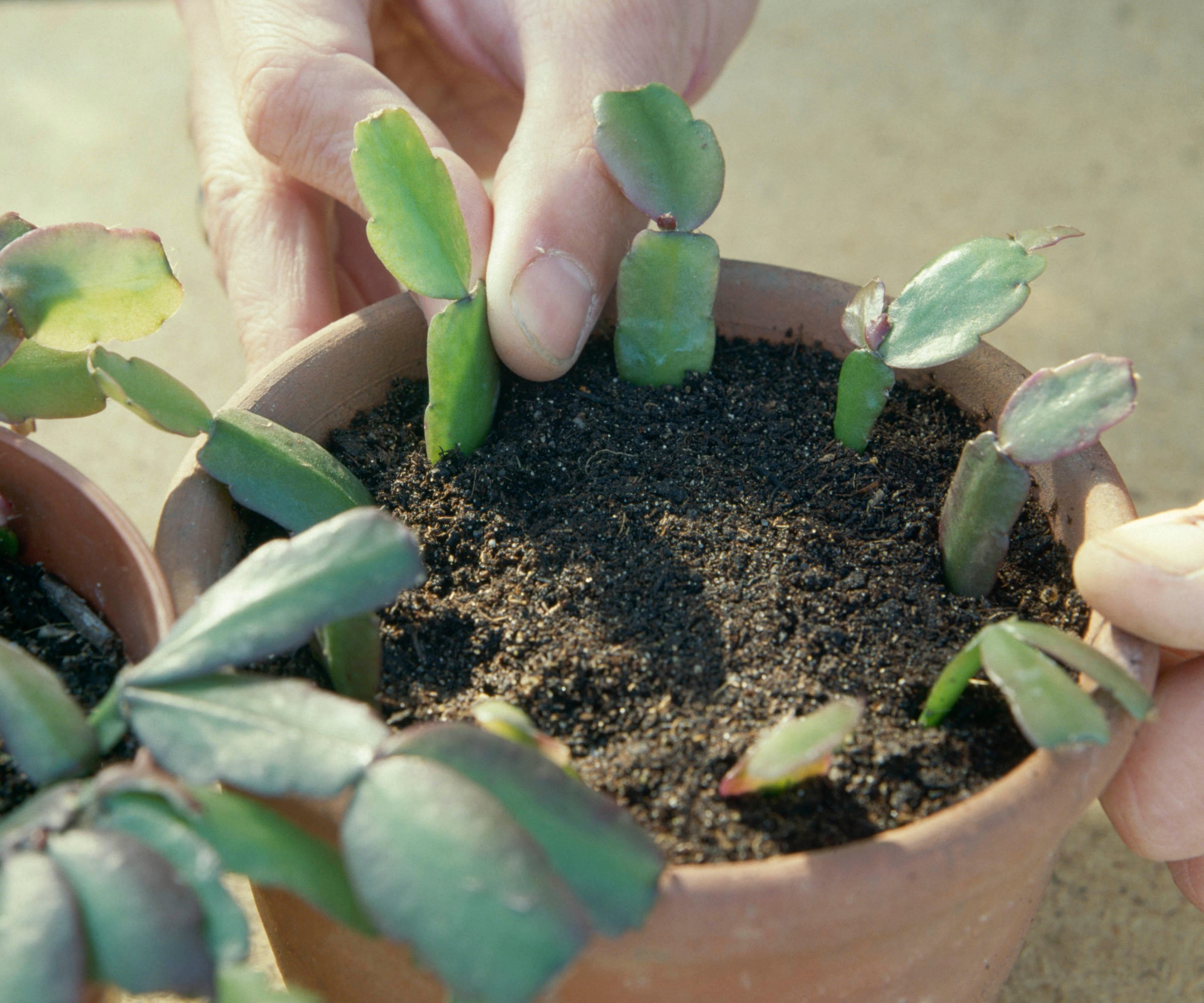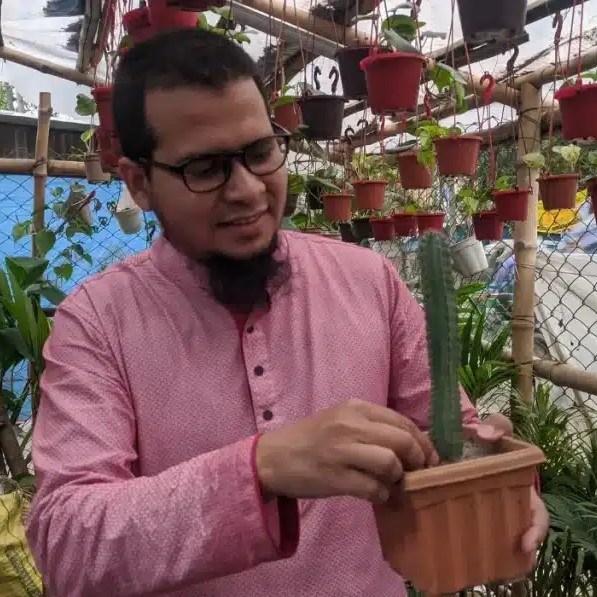How to grow cactus from cuttings – 4 steps to follow to get more plants for free
Stem cuttings are a great way to propagate cactuses and expand your collection


Cactuses are hugely popular indoor plants that are simple to look after and come in wide and varied forms. They are relatively simple to propagate and you can grow a cactus from a cutting to create new plants to add to your houseplant collection.
There are a few key steps to get correct when trying to grow a cactus from a cutting. Light and water are really important factors to ensure the cutting you take grows successfully into a new plant.
Knowing how to water a cactus properly is a key skill to have when looking after these indoor plants. Overwatering is easy to do and tends to be the number one reason that people unfortunately kill their cactus and succulents. We take a look at when and how to grow cactus from a cutting and outline key steps to succeed in getting more of these excellent houseplants.

Cactus and succulents can both be grown from stem cuttings
When to propagate cactuses from cuttings
As well as understanding how to take plant cuttings, it is important to know the right time to try to propagate new plants using this method. The right time of year often depends on the type of cutting you are taking.
When you want to grow a cactus from a cutting you are taking stem cuttings – this method is the easiest and most common way to propagate cactuses. Any cactuses that are formed of sections, including the popular prickly pear cactus and Christmas cactus, are ideal for stem cuttings. It is important to understand your cactus species and do some research if stem cuttings are ideal, as some cactus types may be better propagating using offshoots.
Kayla Gajdascz, co-founder of Mental Houseplants, says: ‘The best time to take cactus cuttings is during the active growing season, which typically occurs in spring or early summer. At this time, cacti are more likely to root successfully due to the favorable conditions.’
It is recommended not to take cuttings from cactus during a heatwave period, where the plant will already be stressed as it tries to survive, or during the plant dormancy period between October and March.
Design expertise in your inbox – from inspiring decorating ideas and beautiful celebrity homes to practical gardening advice and shopping round-ups.

Kayla Gajdascz is president & co-founder of Mental Houseplants, a company who sells houseplants to share the positive impact plants have on your mental health while partnering with the National Alliance on Mental Illness to donate a portion of every sale to them.
Prickly Pear Cactus | Available at Bloomscape
A cactus with pads shaped like a beavertail, the Prickly Pear Cactus is a low-maintenance plant with a no-fuss care routine with infrequent watering and fertilizing

Christmas cactuses are perfectly suited for cuttings
How to take a cactus cutting
Taking cactus cuttings is a fairly simple procedure. It is important to use clean garden tools to prevent the transmission of any diseases and also the wearing of gloves is advised to keep safe from the cactus spines - or you can use tongs to handle them. You want to be careful when handling the cactus as many are fragile and sections can easily be taken off with a little knock.
Mahfuzur Rahman is the founder of Cactus Query and he outlines four key stages for how to take cuttings from cactus:
- Select a healthy, disease-free cactus with no signs of stress or damage
- Use a sharp, clean knife or scissors. Make a clean, diagonal cut just above a joint or segment on the cactus
- Ensure your cutting is at least 3-4 inches long for better chances of success
- Allow the cutting to air dry for a few days in a dry, shaded area. This helps to callus the cut end, reducing the risk of rotting
Leaving the cuttings to callus over the cut end is a very important stage in the process of how to grow cactus from cuttings. It helps prevent the cuttings rotting and you want to leave the cut end to air dry until the surface has healed over.

Mahfuzur Rahman is the founder of Cactus Query and a passionate cactus enthusiast with years of experience. He has devoted countless hours to studying, caring for, and nurturing these unique and fascinating plants.

Cactus cuttings need to callus before being planted
How do you plant a cactus cutting?
The next stage of how to grow a cactus from a cutting is to pot up the cutting once the end has calloused over. Choose a small pot, ensuring it has holes in the bottom for drainage, and fill it with a well-draining compost mix specifically designed for growing cactuses. An example of such a mix is the Espoma Organic Cactus Potting Mix for Cactus, available at Walmart.
Insert the cutting into the soil-dried end first, pushing it deep enough into the soil to allow it to stand upright. Pat the soil gently around the cutting to help stabilize it in the soil. Water the cuttings lightly and then place the pot in a warm and bright windowsill, but not in direct sunlight. Intense direct sunlight at this stage can burn the cutting and potentially kill it.
Only water the cutting when the compost feels dry, as too much water at this stage could cause it to rot. When watering plants in containers, check the soil moisture levels below the surface with your finger.
It can take 3-4 weeks for the cutting to root and it is important to resist the urge to regularly pull the cutting to check its progress. After two weeks you can gently tug to check for roots and resistance will be a sign that roots have formed. An alternative is to check the base of the pot to see if any roots are showing.
When the cutting has rooted, the time will come to carefully repot the cactus cutting into a pot filled again with specialist cactus compost. Terracotta pots are best for cactuses as their porous nature increases the water and airflow through the soil.
FAQs
Can you root a cactus in water?
It is possible to root cactus cuttings in water instead of soil, but it is not a traditional way of propagating cactuses. If you wish to try, then take cuttings in the same way as outlined above and, after letting a cutting callus over, place it in a container of water with around a quarter of it submerged. Cuttings should root in a few weeks, but bear in mind that not all cactuses will respond well to rooting in water.
Can you replant a broken off piece of cactus?
Sometimes unfortunate things do happen and fragile parts of cactuses can break off for many reasons. As long as the piece that broke off is healthy, then it does not have to be the end for that portion. Andrea Galbreath from succulent business, Just Succ It, says that you can ‘absolutely’ replant when this happens, advising: ‘A broken piece can be replanted the same way one would replant a cactus cutting.’
Cactuses are commonly thought of as fairly indestructible plants, but there are reasons why cactuses turn brown and can seem unhappy. Often this is down to the two common culprits that cause issues for cactuses – namely too much water and too much direct sunlight.

Drew has worked as a writer since 2008 and was also a professional gardener for many years. As a trained horticulturist, he worked in prestigious historic gardens, including Hanbury Hall and the world-famous Hidcote Manor Garden. He also spent time as a specialist kitchen gardener at Soho Farmhouse and Netherby Hall, where he grew vegetables, fruit, herbs, and cut flowers for restaurants. Drew has written for numerous print and online publications and is an allotment holder and garden blogger. He is shortlisted for the Digital Gardening Writer of the Year at the 2025 Garden Media Guild Awards.
